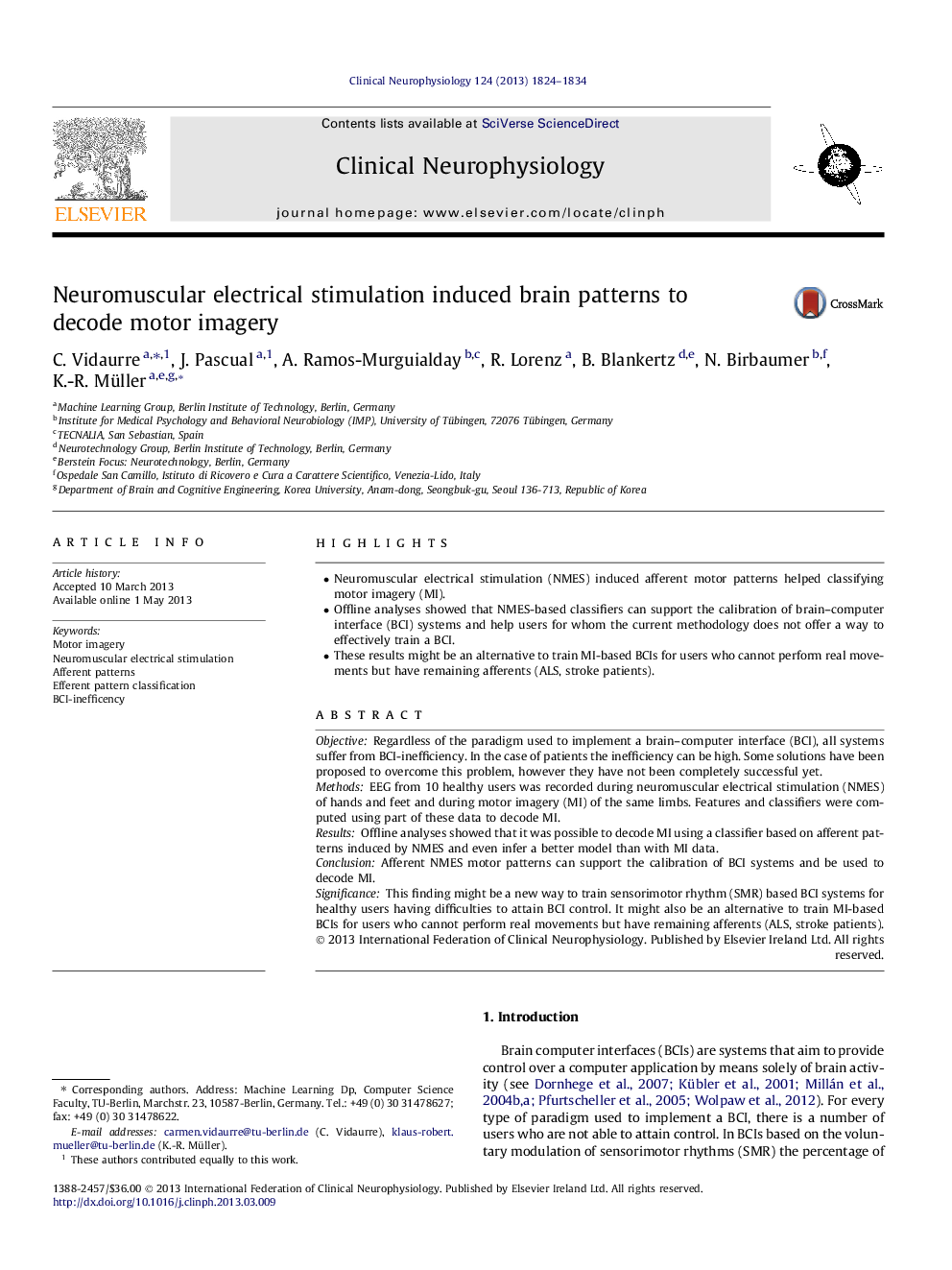| Article ID | Journal | Published Year | Pages | File Type |
|---|---|---|---|---|
| 6009001 | Clinical Neurophysiology | 2013 | 11 Pages |
â¢Neuromuscular electrical stimulation (NMES) induced afferent motor patterns helped classifying motor imagery (MI).â¢Offline analyses showed that NMES-based classifiers can support the calibration of brain-computer interface (BCI) systems and help users for whom the current methodology does not offer a way to effectively train a BCI.â¢These results might be an alternative to train MI-based BCIs for users who cannot perform real movements but have remaining afferents (ALS, stroke patients).
ObjectiveRegardless of the paradigm used to implement a brain-computer interface (BCI), all systems suffer from BCI-inefficiency. In the case of patients the inefficiency can be high. Some solutions have been proposed to overcome this problem, however they have not been completely successful yet.MethodsEEG from 10 healthy users was recorded during neuromuscular electrical stimulation (NMES) of hands and feet and during motor imagery (MI) of the same limbs. Features and classifiers were computed using part of these data to decode MI.ResultsOffline analyses showed that it was possible to decode MI using a classifier based on afferent patterns induced by NMES and even infer a better model than with MI data.ConclusionAfferent NMES motor patterns can support the calibration of BCI systems and be used to decode MI.SignificanceThis finding might be a new way to train sensorimotor rhythm (SMR) based BCI systems for healthy users having difficulties to attain BCI control. It might also be an alternative to train MI-based BCIs for users who cannot perform real movements but have remaining afferents (ALS, stroke patients).
